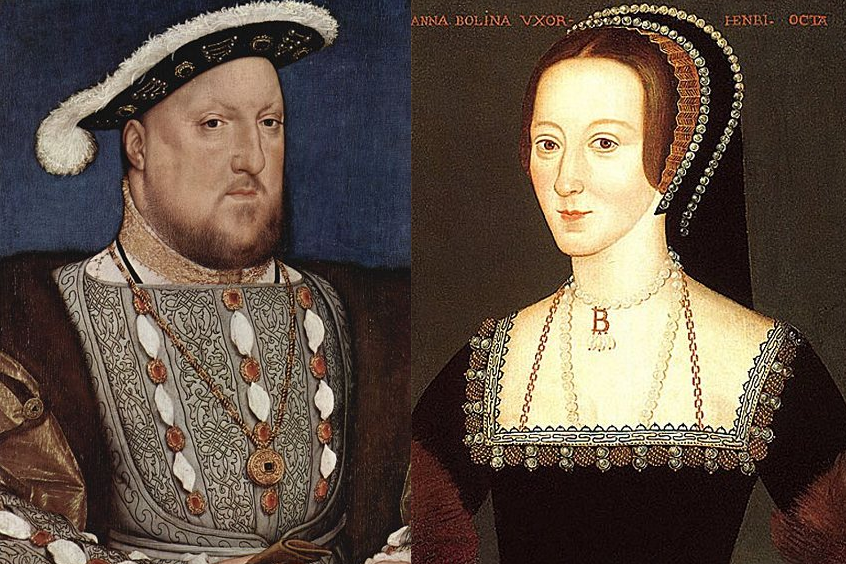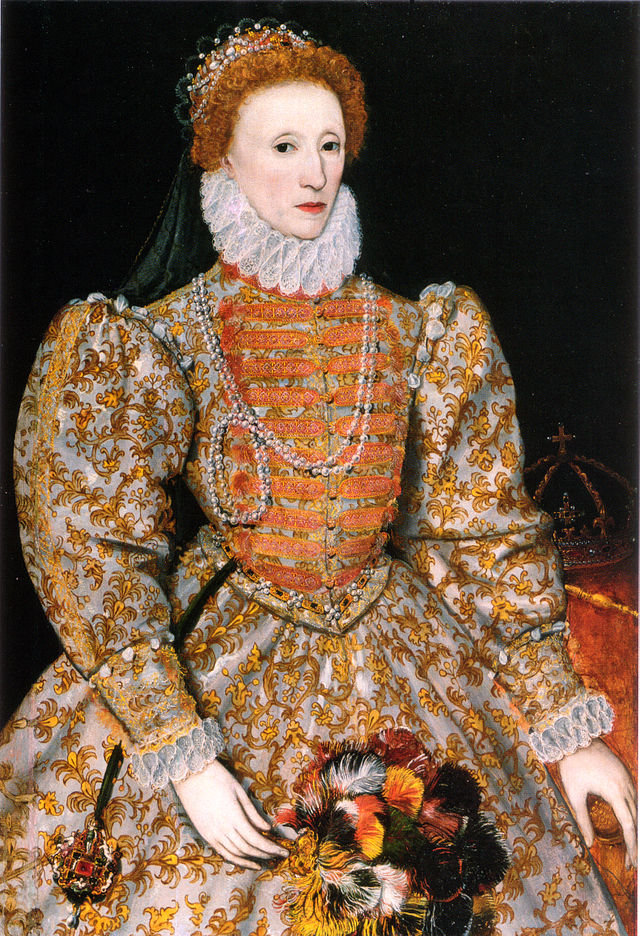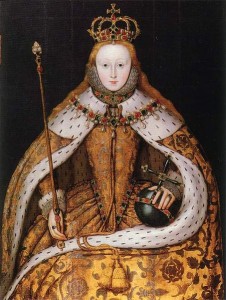I’d like to share with you a guest post about Elizabeth I by novelist Anne Clinard Barnhill. Anne kindly donated a copy of her book, ‘Queen Elizabeth’s Daughter’ to our 25 Days of Christmas Giveaways. US residents can enter here.
Over to Anne!
Elizabeth I
By Anne Clinard Barnhill
What sort of woman was Queen Elizabeth I? From all accounts, she was erudite, scholarly, mercurial and multi-talented. She inherited her facility with languages from her mother’s side of the family; both her mother, Anne Boleyn, and her grandfather, Thomas Boleyn, spoke many languages fluently. Thomas Boleyn had been made ambassador due to his linguistic abilities and Anne had grown up in the French court, where learning French, Latin and Greek was part of a well-bred ladies’ education. Elizabeth spoke French, Italian, and Latin fluently. Her oral Greek was passing and her Spanish also. For fun, she translated works from the ancient Greek and Roman writers into English, then into French or Italian and finally, back to their original languages, an exercise still in use today in parts of the world.
 Elizabeth had a great command of the skills necessary to be the head of the country, the head of the church. She also was accomplishedin the more feminine arts—she loved dancing, playing the virginals (it’s possible the pair she played had belonged to her mother, who was also musical). She embroidered well, even as a child, when she stitched a cover for her stepmother, Katherine Parr, for Christmas. But she couldn’t stop with mere needlework; she had to show Parr the full range of her abilities, for her step-mother valued learning in women. She translated The Mirror of the Sinful Soul by the French princess, Margaret of Angouleme from French into English.
Elizabeth had a great command of the skills necessary to be the head of the country, the head of the church. She also was accomplishedin the more feminine arts—she loved dancing, playing the virginals (it’s possible the pair she played had belonged to her mother, who was also musical). She embroidered well, even as a child, when she stitched a cover for her stepmother, Katherine Parr, for Christmas. But she couldn’t stop with mere needlework; she had to show Parr the full range of her abilities, for her step-mother valued learning in women. She translated The Mirror of the Sinful Soul by the French princess, Margaret of Angouleme from French into English.
Though she received an excellent education, she did not receive any training to rule, as her brother, Edward, had. No classes in government or how to handle the affairs of a kingdom. However, once she became queen in 1558, she learned quickly “by experience,” as she later said of that time. One subject she learned very well from her father, Henry VIII, was the value of propaganda. Henry commissioned portraits that suggested him to be a strong, larger-than-life character, a man who could win in battle and whose rule was to be unquestioned. Elizabeth used the same techniques, portraying herself as she wished to be seen by her people—Gloriana, the almost goddess-like mistress of England.
But what was the real Elizabeth like? The private woman? We know she was vain. As she grew older, she banned mirrors from her apartments because she did not like what she saw. And, when she was dealing with Mary, Queen of Scots, she pestered the Scottish ambassador with questions about Mary’s looks and her manners. Being told Mary was a good deal taller than Elizabeth, Elizabeth said, “Then she is too tall.”
It took Elizabeth about two hours each day to dress and put on her face. Having a Tudor dress of my own, I completely understand why. The many layers, ties, pins and petticoats would be a daunting task indeed, even with ladies-in-waiting to help. The white make-up Elizabeth used as she grew older would have taken some time, as well as the elaborate hairdos, which often used wire frames on which to weave the hair. And don’t forget the pearls strewn through the red locks.
Elizabeth also had charisma, that mysterious quality attracts all kinds of people. Both her parents had it, so it is no surprise Elizabeth also possessed this illusive trait. On progress during the summer, crowds lined the streets to see the queen pass. Elizabeth enjoyed their gifts and their adulation. She responded to them with warmth and kindness. It was obvious she loved her people and they loved her.
A woman in a man’s world, Elizabeth used all of her gifts to rule. She deflected criticism of her sex by beginning many of her sentences with phrases like “though I be feeble woman”. In this way, she acknowledged her gender and thus, her natural limitations. However, she then did a tricky thing with language; she often called herself a ‘prince’, making a gender-switch when she wanted to establish her authority more firmly. She was also known to curse a great deal. One ambassador said she swore by every part of God. This use of language would also have made her more ‘manly’ and, therefore, more ‘kingly.’
 Space prohibits further discussion of Queen Elizabeth’s character. Suffice it to say, she ruled England using her many gifts, including her femininity. She refrained from was as best she could. She balanced the conflict between the Catholics and Protestants. Her court attracted artists, musicians, philosophers and writers; as a result of her leadership, the English Renaissance flourished. By the way, she did not have a child, though some novels play around with this idea. My own novel, though titled Queen Elizabeth’s Daughter, does not.
Space prohibits further discussion of Queen Elizabeth’s character. Suffice it to say, she ruled England using her many gifts, including her femininity. She refrained from was as best she could. She balanced the conflict between the Catholics and Protestants. Her court attracted artists, musicians, philosophers and writers; as a result of her leadership, the English Renaissance flourished. By the way, she did not have a child, though some novels play around with this idea. My own novel, though titled Queen Elizabeth’s Daughter, does not.
Sources
The Life of Elizabeth I, by Alison Weir.
Elizabeth I, by Anne Somerset


















I would love this book!!!!
I would too
Excellent article, thank you!
I find Elizabeth I to be one of the most interesting rulers in history.
It’s nice to read stories about powerful women.
To have met her must have been to be in Glory!
Wonderful – thank you and Happy Christmas
Elizabeth I is always an interesting read, this is a new author to me. Thanks for the chance to win a copy.
This was a wonderful post by Anne. I did a review earlier of her “Elizabeth’s Daughter” novel and today followed with the earlier novel about Anne Boleyn and Margaret Shelton. You can check those reviews out here.
Sorry, my link in my first comment didn’t work. Here it is again.